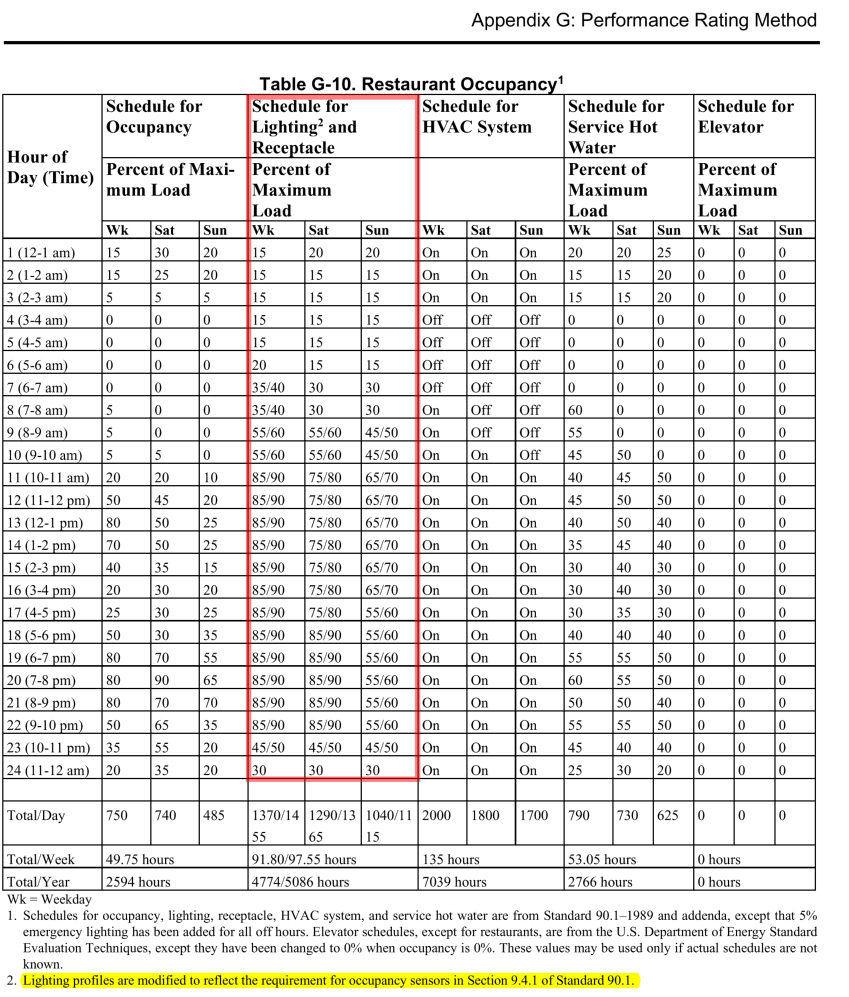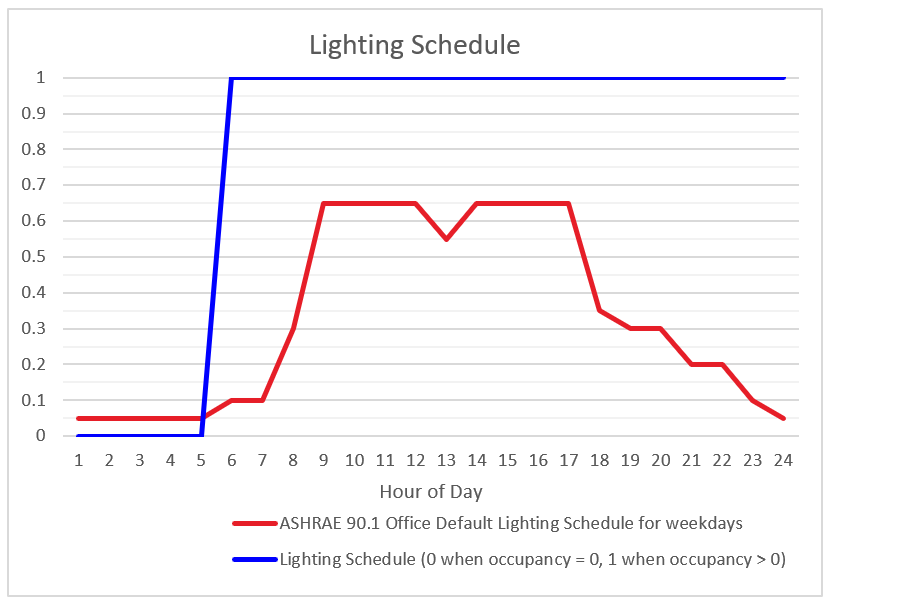Lighting schedule without Occupancy Sensor
A very basic question not specific to simulation software. I'm curious what kind of lighting schedule others are using.
For ASHRAE 90.1 Appendix G, Schedules capable of modeling hourly variations in occupancy, lighting power, miscellaneous equipment power, thermostat setpoints, and HVAC system operation shall be typical of the proposed building type as determined by the designer and approved by the rating authority, and they are basically identical in the Proposed case and the Baseline case.
If the schedules are unknown, we can use the default schedules in 90.1 User's Manual. The default schedules are based on Standard 90.1-1989, and the lighting profiles are modified to reflect the requirement for occupancy sensors in Section 9.4.1 of Standard 90.1. Below is the default schedules for office.

Ok, we can use the default lighting schedule for zones with occupancy sensors, but what about lighting without occupancy sensors? For the lighting in corridors or lift lobbies with simple on/off control, should we set another lighting schedule like the blue line in the following chart? The blue line is 0 when the occupancy is 0, and 1 when the occupancy > 0. Or can we also use the default lighting schedule even if the lighting does not have occupancy sensors because the default lighting schedule is regarded the average one in the building throughout the year?

For unoccupied rooms such as mechanical/electrical rooms, the lighting is seldom used. It turns on only when the rooms are occupied for the equipment maintenance. The average daily lighting time will be less than one hour. So, I usually use the custom schedule which turns on the lighting for 30 min or 1 hour per day.




